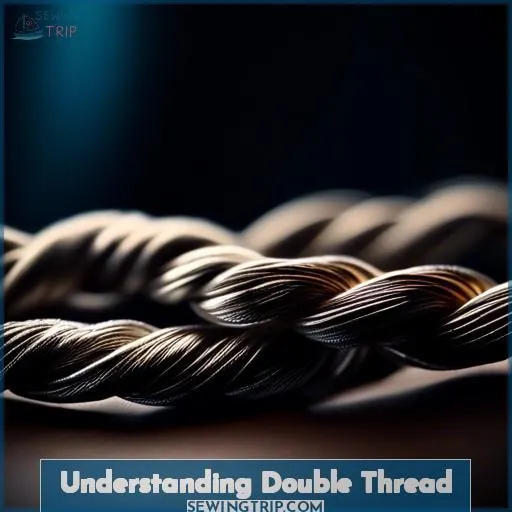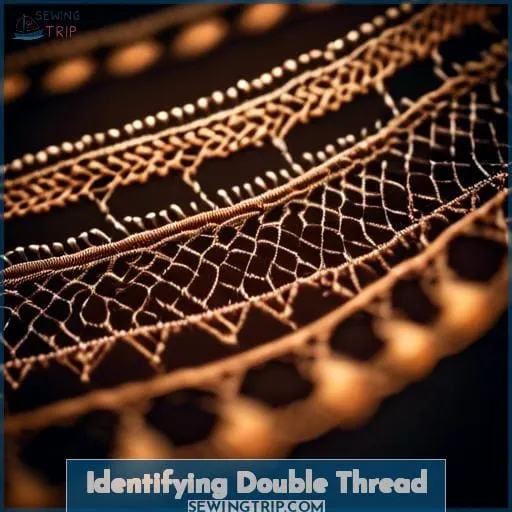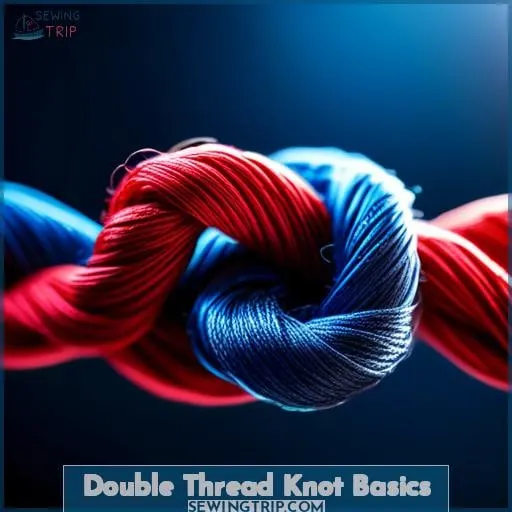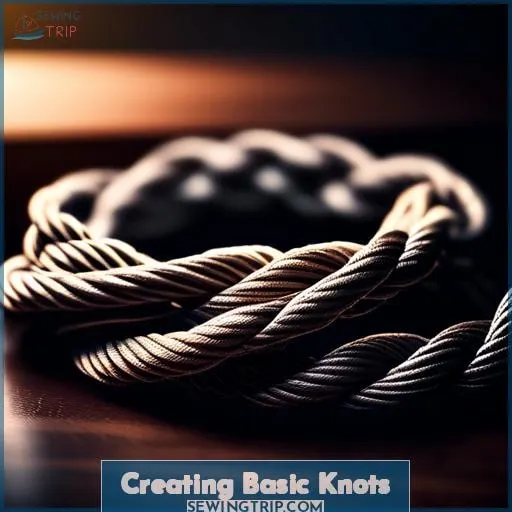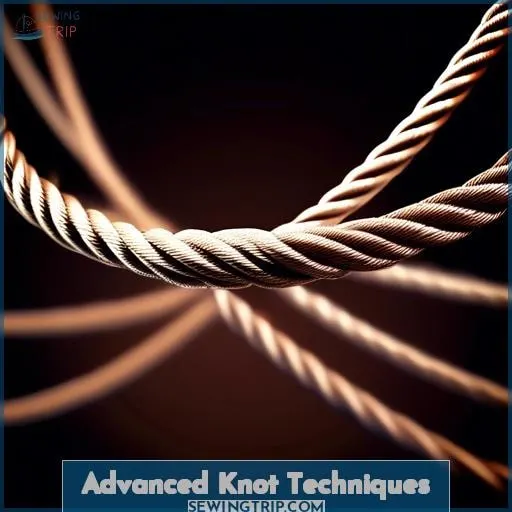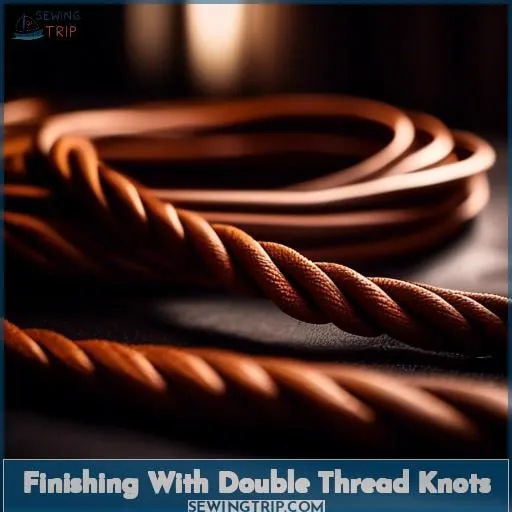This site is supported by our readers. We may earn a commission, at no cost to you, if you purchase through links.
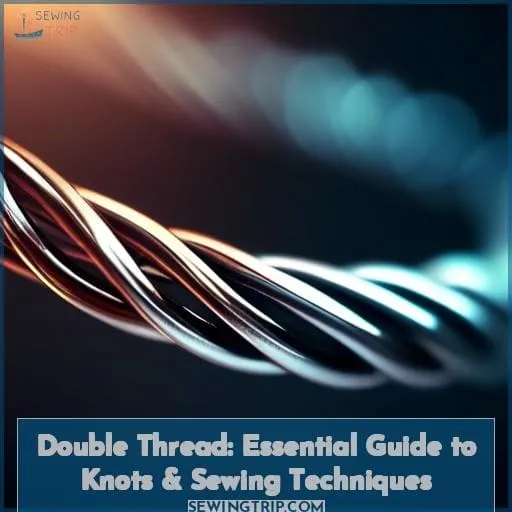 Embarking on your sewing journey, you’ll quickly discover the strength and versatility of a double thread. This technique, where you fold a single thread to create two parallel lengths, offers extra durability and thickness for your projects.
Embarking on your sewing journey, you’ll quickly discover the strength and versatility of a double thread. This technique, where you fold a single thread to create two parallel lengths, offers extra durability and thickness for your projects.
Whether you’re securing buttons, reinforcing seams, or mastering intricate knots, mastering the double thread is essential.
Dive into this guide to enhance your sewing prowess and ensure your creations withstand the test of time with the reliable double thread method.
A double thread involves using a single string of thread folded in half to create two parallel threads, enhancing the strength of sewing connections. This technique is particularly useful for hand sewing, offering stronger and more secure stitches.
Table Of Contents
Key Takeaways
- Double threading involves folding a single thread to create two parallel lengths, enhancing stitch strength and durability, making it ideal for securing buttons, reinforcing seams, and intricate knotting.
- A double thread is identified by threading a needle with a loop at one end, doubling back on itself to create a stronger, more versatile connection that manages thread tension effectively and allows for creative color combinations.
- The basics of double thread knots include using materials like nylon for shock absorption and polyester for resilience, ensuring the needle size matches the thread thickness, and maintaining balanced tension to avoid stitches that are too loose or tight.
- Advanced knot techniques with double threading open up possibilities for creativity and innovation in sewing, allowing for the exploration of alternative materials and the creation of knots that are both functional and aesthetic, particularly useful in areas of high stress and artistic applications like weaving and tapestry.
Understanding Double Thread
When you’re getting to grips with double threading, think of it as your trusty sidekick in the hand sewing universe. This dynamic duo of strands not only beefs up the durability of your stitches but also zips through fabric at a pace that single thread can only dream of.
Sure, it might seem like double the thread equals double the trouble, but it’s actually a cost-effective trick to avoid the hassle of frequent thread changes.
Now, let’s cut to the chase: mastering the double thread is a basic hand sewing skill that’s as essential as tying your shoes. Imagine you’re about to fasten a button, and you want that little guy to stay put through thick and thin.
Double thread is your go-to. It’s like having a sewing partner in crime that doubles the strength without doubling the effort. So, grab your needle, and let’s tie the knot—literally. We’re talking about a basic knot that’s twice as nice and ready to tackle any textile challenge thrown its way.
Identifying Double Thread
Transitioning from understanding to identifying double thread, let’s dive into the heart of what makes double threading a game-changer in sewing and knotting. Identifying double thread is like spotting a twin in a crowd—once you know what to look for, it’s unmistakably clear.
Double thread, essentially, involves taking a single thread, doubling it back on itself, and threading both ends through the needle, creating a loop at the other end. This technique is your secret weapon for stronger connections in your sewing projects.
Why bother, you ask? Well, double threading isn’t just about durability; it’s about versatility. It opens up a world of possibilities, from vibrant color combinations that make your projects pop to decorative knotting that adds flair.
Plus, managing thread tension becomes a breeze, ensuring your stitches are neither too tight nor too loose. Whether you’re crafting a basic knot or venturing into advanced techniques, double thread ensures your creations stand the test of time.
So, grab your needle, and let’s double down on double threading—your sewing is about to get a whole lot stronger and more interesting.
Double Thread Knot Basics
Diving into the world of double thread knot basics, you’re stepping into a realm where strength meets finesse. Imagine you’re doubling down on durability with every stitch. Double thread, whether it’s nylon for its shock absorption or polyester for its resilience, becomes your ally in creating robust creations.
Think of double thread as the dynamic duo of sewing – it’s Batman and Robin, but for your needle.
When selecting your needle size, remember that compatibility is key. A needle too small might break the thread, while too large could punch unnecessary holes in your fabric. It’s like finding the perfect dance partner – size matters for the perfect harmony.
Now, onto tension. Double thread tension can be a bit like walking a tightrope. Too loose, and your stitches might sag like a hammock on a lazy day. Too tight, and you risk snapping the thread, like a guitarist strumming too hard on a high note.
The goal is to find that sweet spot where your stitches lay flat and even, like a calm sea.
For those intrigued by the mechanics of threads, trapezoidal and metric ISO threads offer a fascinating dive into precision and design. These aren’t just threads; they’re the unsung heroes of structural integrity, much like the steel beams in skyscrapers.
And let’s not forget about the humble beginnings of our journey – the basic knot. It’s the foundation of all sewing adventures, the first step on your path to mastery. Whether you’re preserving jars with a tight seal or crafting a sail to withstand the high seas, the double thread knot is your starting line.
So, grab your needle, choose your thread, and let’s tie the knot on this adventure. Remember, every stitch is a step towards innovation and mastery, with a sprinkle of fun along the way.
Creating Basic Knots
Now that we’ve covered the basics of double thread knots, let’s dive into the art of creating basic knots. This step is where your journey into knot tying truly begins, transforming simple threads into the backbone of your sewing projects.
- Knot Tying: Begin with the single-start knot, a fundamental skill that sets the stage for more complex creations. It’s all about getting that first loop right, which is crucial for both knot strength and security.
- Knot Strength: As you progress, focus on the pitch of your knots. This isn’t just about making your work look good; it’s about ensuring each knot can withstand tension without giving way. Think of it as the power transmission in your sewing engine.
- Knot Security: Practice makes perfect. The more you practice, the faster your processes will become, leading you to master advanced knot techniques. Remember, a secure knot is the linchpin of your project’s integrity.
Embarking on this journey, you’ll find that knot tying is more than just a skill; it’s an art form that requires patience, precision, and a dash of creativity.
Advanced Knot Techniques
Diving into the world of advanced knot techniques with double thread opens up a treasure trove of possibilities for your sewing and artistic projects. You’ve mastered the basics, now let’s crank it up a notch. Double thread isn’t just about durability; it’s a gateway to creativity and innovation.
When exploring advanced knot variations, think of each knot as a unique character in your sewing story, each with its own strengths and quirks. Analyzing knot strength isn’t just technical—it’s an art. It’s about finding the perfect balance between resilience and aesthetics.
Ever thought about the materials you’re using? Moving beyond traditional threads to alternative double thread materials like biodegradable plastics or even yak leather can transform your projects from mundane to extraordinary.
These materials not only offer environmental benefits but also add a unique texture and story to your creations.
And let’s not forget about double thread in artistic applications. This is where your creativity can truly shine. Imagine weaving a tapestry of colors and textures, each knot a stroke of your brush creating a masterpiece.
So, grab your needle and thread, and let’s embark on this journey together. Remember, every knot you tie is a step closer to mastering the art of sewing and knotting.
Finishing With Double Thread Knots
After mastering advanced knot techniques, it’s time to wrap up your sewing projects with finesse using double thread knots. This final touch isn’t just about tying off; it’s about ensuring your work stands the test of time.
Double thread strength and knot durability are your allies here, ensuring your creations withstand wear and tear.
When finishing, pay close attention to thread tension. Too loose, and your knots might slip; too tight, and the fabric could pucker. Aim for that Goldilocks zone where everything is just right. Secure finishes are crucial, especially in areas of high stress.
Think of it as tying the perfect bow on a gift; it’s the last step but speaks volumes about the care put into the package.
For those ready to push boundaries, advanced techniques in double thread knots can elevate your sewing game. Imagine creating a knot that’s not only functional but also an aesthetic feature.
Frequently Asked Questions (FAQs)
How does double threading affect thread tension?
Double threading can make your sewing machine’s tension trickier to balance. You’re juggling two threads through one needle, doubling the fun and the challenge.
It’s like walking two dogs with one leash; coordination is key. If both threads aren’t evenly tensioned, your stitches might look like a bumpy road rather than a smooth highway.
So, tweak those dials gently, test on scrap fabric, and find that sweet spot where both threads play nice together.
Can double threading prevent thread breakage?
Double threading can indeed help prevent thread breakage by distributing tension more evenly across two threads, reducing the strain on each.
It’s like having a buddy system for your threads; they’ve got each other’s back, making your sewing smoother and less prone to annoying snap, crackle, and pop moments.
What are the benefits of double threading in beadwork?
In the enchanting world of beadwork, double threading is like having a backstage pass to a smoother show. It’s your secret weapon against the dreaded bead wobble, ensuring your creations hold their ground with grace.
This technique not only tightens the ranks of your beads but also extends the curtain call of your thread’s performance, making those frustrating do-overs a rare act.
How does double threading impact the durability of a sewing project?
Double threading boosts your sewing project’s durability by using two threads, making seams stronger and more resistant to wear and tear.
It’s like having a backup: if one thread gives up the ghost, the other’s still holding the fort.
Is double threading suitable for all types of fabric and thread?
Oh, the irony of thinking double threading is the Swiss Army knife of sewing, suitable for all fabrics and threads!
You’d be stitching up a storm, only to find your seams puckering like a sour lemon on synthetic fabrics.
Double threading isn’t a one-size-fits-all; it’s more like choosing the right dance partner for the fabric waltz.
Conclusion
You’ve conquered the Everest of threads, and now, with the power of the double thread firmly in your sewing arsenal, you’re ready to tackle any textile challenge that dares to unravel before you.
So go forth, wield your needle with confidence, and let the double thread be the hero of your hemlines and the champion of your cross-stitches!

